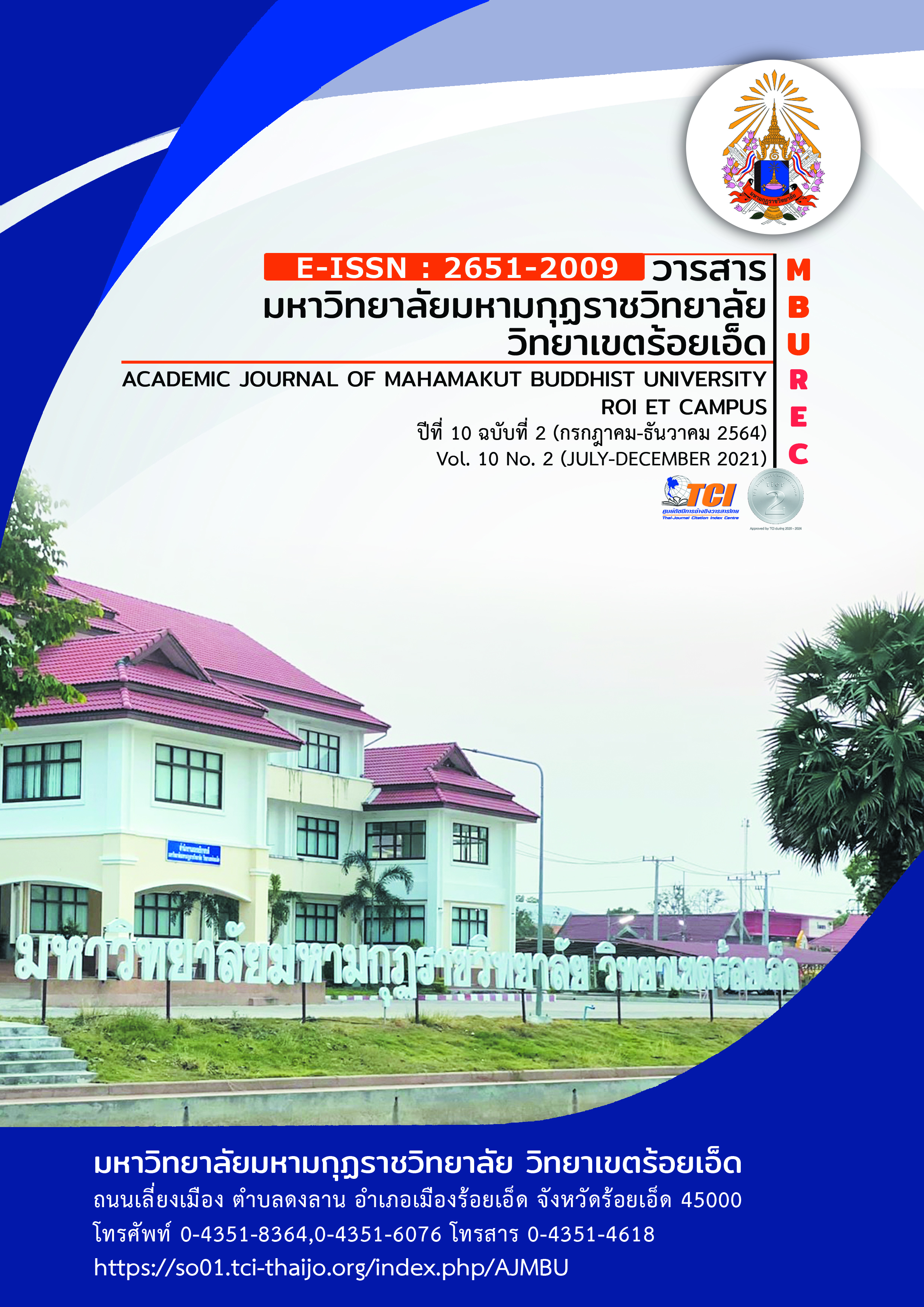The Role of Phaya Blessing in the Way of life of Isan People
Main Article Content
Abstract
The objective of the research article were 1) to collects categories and formats of the blessing adages used in Thailand’s northeastern region, 1) to study their categories, roles of the blessing adages to northeast Thais’ ways of life and their values. The samples used in this research were 108 monks and 170 lay people. The research tools were the observation form and the interview form. The present research results by descriptive analysis.
The present research results by descriptive analysis. 1. There are two categories of the blessing adages, common and formal categories. The first one is used in intimate occasion, another one in the special, formal setting. In other words, they can be divided into three types according to recipients’ genders and ages, and occupations. Stylistically, there are two models of bestowing the blessing adages, in poetic verses and proses. The second model can be divided into two contextual settings, namely used in general and ceremonial settings. 2. Roles and values of the blessing adages to ways of northeast Thais’ life have been found that they believe in souls (the life after demise) and ghosts of various types, as well as happiness. In the economic context, the blessing adages reflect on roles and values of occupations of rice farming, plant farming, gardening, fishery, weaving and trading. In the social context, they reflect on roles and values of their ways of life as the practice of their unity living that enables human beings to get along with natures and various environments in order to lessen their social tension in social statuses, including enjoying their funny and joyful life styles. In traditional and cultural context, they reflect on roles and values of traditions and culture of birth, morale boosting, ordination, household leading, demise, and monthly merit-makings and fourteen mores.
Article Details
References
จารุวรรณ ธรรมวัตร. (2526). ผญาบทกวีของชาวบ้าน. กาฬสินธุ์ : จินตภัณฑ์การพิมพ์.
ทรงศักดิ์ ปรางค์วัฒนากุล. (2526). การศึกษาเปรียบเทียบอู้บ่าวสาวลานนาและผญาเกี้ยวอีสาน.วิทยานิพนธ์ศิลปศาสตรมหาบัณฑิต สาขาวิชาภาษาไทย. มหาวิทยาลัยเชียงใหม่.
นิภาภรณ์ สิงคะกุล. (2537). ผญาเกี้ยวจากบ้านชูชาติ ตำบลอาจสามารถ อำเภออาจสามารถ จังหวัดร้อยเอ็ด. วิทยานิพนธ์ศิลปศาสตรมหาบัณฑิต สาขาวิชาไทยคดีศึกษา. มหาวิทยาลัยศรีนครินทรวิโรฒ มหาสารคาม.
ประคอง กองทุ่งมน. (2544). ผญาอวยพรของชาวบ้านสูงยาง ตำบลคูเมือง อำเภอเมืองสรวง จังหวัดร้อยเอ็ด. สารนิพนธ์ศิลปศาสตรมหาบัณฑิต สาขาวิชาไทยคดีศึกษา. มหาวิทยาลัยมหาสารคาม.
ประดิษฐ์ จิตตะบุตร. (2537). ผญาของชาวสุมพิสัย จังหวัดมหาสารคาม. วิทยานิพนธ์ศิลปศาสตรมหาบัณฑิต สาขาวิชาไทยคดีศึกษา. มหาวิทยาลัยศรีนครินทรวิโรฒ มหาสารคาม.
ไพโรจน์ เสรีรักษ์. (2537). พุทธศานคดี : ไปไหว้พระบรมสารีริกธาตุทั่วเมืองไทย. กรุงเทพมหานคร : โอ.อส.พริ้นติ้งเฮ้าส์.
วิสุทธิ์ บุษยกุล. (2520). วิสุทธิ์นิพนธ์. กรุงเทพมหานคร : สำนักพิมพ์โอเดียนสโตร์.
สุเนตร วีระภัทร. (2538). ผญาของชาวเผาผู้ไทย กิ่งอำเภอหนองสูง จังหวัดมุกดาหาร. วิทยานิพนธ์ศิลปศาสตรมหาบัณฑิต สาขาไทยคดีศึกษา. มหาวิทยาลัยศรีนครินทรวิโรฒ มหาสารคาม.
สุพรรณ ทองคล้อย. (2520). ลักษณะร้อยกรองพื้นถิ่นอีสาน. วิทยานิพนธ์อักษรศาสตรมหาบัณฑิต. บัณฑิตวิทยาลัย : จุฬาลงกรณ์มหาวิทยาลัย.


